Research Reports
Phase 1: Transparency Studies
Ella Marie Rokohl (2023): Supply of Essential Medicines – The Case of Antibiotics
Abstract: This thesis evaluates the supply chain resilience of Amoxicillin, an essential antibiotic, in China, Austria, and Turkey as potential production sites. The study analyses various cost factors, including raw material expenses, labour, energy, disposal, and miscellaneous costs including existing market conditions and supply chain settings. China emerges as a cost-effective hub with significant advantages in raw material sourcing, low labour costs, and a robust supply chain. Results show China’s dominance in the market, with a majority of fully vertically integrated manufacturers based there. Around 88% of reaction intermediate manufacturers and over 50% of API manufacturers are located in China. In contrast, Austria has only one remaining producer, facing a 19% cost disadvantage per tablet compared to China, and this gap has widened since the European energy crisis. As a means to diversify the supply chain, Turkey was identified as an alternative production location with a mere 4% additional cost. These findings offer valuable insights into the European pharmaceutical market, aiding in making informed decisions to ensure a stable Amoxicillin supply chain.
The full thesis will be publicly accessible soon. For access in the meantime, please contact us directly
Maria Schander (2024): Supply Chains of Essential Medicines – Transparency Study on Ibuprofen
Original Title: Supply Chains Unentbehrlicher Arzneimittel –Transparenzstudie zu Ibuprofen
Abstract: The transparency study conducted in this thesis presents new insights into the global supply chain and the cost structure of Ibuprofen. The first part shows Europe’s strategic dependence on Asian raw material manufacturers, particularly for the active ingredient of Ibuprofen. Five of the seven major players in the global Ibuprofen active ingredient market come from India and China, whose production capacities cover around 78% of the total market volume of Ibuprofen. India is also the global market leader in the most important raw material for Ibuprofen synthesis, Isobutylbenzene. In addition, a significant reduction of European Ibuprofen 400 film-coated tablet manufacturers and declining sales for the remaining producers indicate problems of cost pressure due to strict price regulation mechanisms for European Ibuprofen film tablets and an economically induced production decline. In the second part of the thesis, Germany’s dependence on low-cost production sites in Asia was quantitatively demonstrated with the help of a cost structure analysis for the production of Ibuprofen 400 film-coated tablets in India, China and Germany. The price of the tablets produced in Germany is approximately 1.8 times and 2.4 times higher than in India and China, respectively. These cost differences are primarily due to lower operating costs as well as government subsidies for industry and infrastructure in Asia. In the conclusion of the thesis, the most frequently discussed approaches in politics and industry, such as the reform of the Industrial policy framework, the strategic safety reserve as well as re- and nearshoring to strengthen Ibuprofen’s supply chain resilience, were evaluated.
The full thesis will be publicly accessible soon. For access in the meantime, please contact us directly
Selina Schreiber (2024): The Breast Cancer Drug Tamoxifen – Transparency of the Supply Chain and the Cost Structure
Abstract: At the beginning of the year 2022, Germany experienced a six-month supply shortage of the breast cancer drug tamoxifen. Tamoxifen is considered a supply-critical drug that is administered daily for a period of five to ten years as a post treatment for breast cancer. As there is no equivalent alternative therapy, the availability of the drug is of particular importance. This master’s thesis brings transparency to the supply chain and cost structure of tamoxifen and its active ingredient. Against the backdrop of the past supply deficiency, critical aspects of the market structure are identified that put the security of supply at risk. Only three European manufacturers supply Europe with the active ingredient required to produce the finished drug tamoxifen. In addition, two tablet providers serve 95% of the German tamoxifen market, with Hexal AG having a 75% market share. Such concentrated market power of a single supplier entails the risk that the remaining suppliers will not be able to compensate in the case of a possible supply bottleneck by Hexal AG. The low profitability of manufacturing tamoxifen is a key reason for suppliers to exit the market. The complex production of the drug leads to high production costs, leaving net profits as low as €0.02 to €0.03 per tablet. Additional rebate agreements with health insurance companies may reduce net profits, even down to the point of incurring losses.
The full thesis will be publicly accessible soon. For access in the meantime, please contact us directly
Clara Farhat (2024): The Last-Line Antibiotic Colistin – An in-depth Analysis of Supply Chain Dynamics and Cost Structures
Original Title: Das Last-Line-Antibiotikum Colistin – Eine tiefgehende Analyse der Lieferkettendynamik und der Kostenstrukturen
Abstract: At the beginning of the year 2022, Germany experienced a six-month supply shortage of the breast cancer drug tamoxifen. Tamoxifen is considered a supply-critical drug that is administered daily for a period of five to ten years as a post treatment for breast cancer. As there is no equivalent alternative therapy, the availability of the drug is of particular importance. This master’s thesis brings transparency to the supply chain and cost structure of tamoxifen and its active ingredient. Against the backdrop of the past supply deficiency, critical aspects of the market structure are identified that put the security of supply at risk. Only three European manufacturers supply Europe with the active ingredient required to produce the finished drug tamoxifen. In addition, two tablet providers serve 95% of the German tamoxifen market, with Hexal AG having a 75% market share. Such concentrated market power of a single supplier entails the risk that the remaining suppliers will not be able to compensate in the case of a possible supply bottleneck by Hexal AG. The low profitability of manufacturing tamoxifen is a key reason for suppliers to exit the market. The complex production of the drug leads to high production costs, leaving net profits as low as €0.02 to €0.03 per tablet. Additional rebate agreements with health insurance companies may reduce net profits, even down to the point of incurring losses.
The full thesis will be publicly accessible soon. For access in the meantime, please contact us directly
Phase 2: Stress Testing
Anna Gruber (2024): Supply Shortages of Medicines – A Stress Test in the Case of Tamoxifen
Original Title: Liefer- und Versorgungsengpässe bei Arzneimitteln – Ein Stresstest im Fall Tamoxifen
Abstract: This thesis evaluates the supply chain resilience of Amoxicillin, an essential antibiotic, in China, Austria, and Turkey as potential production sites. The study analyses various cost factors, including raw material expenses, labour, energy, disposal, and miscellaneous costs including existing market conditions and supply chain settings. China emerges as a cost-effective hub with significant advantages in raw material sourcing, low labour costs, and a robust supply chain. Results show China’s dominance in the market, with a majority of fully vertically integrated manufacturers based there. Around 88% of reaction intermediate manufacturers and over 50% of API manufacturers are located in China. In contrast, Austria has only one remaining producer, facing a 19% cost disadvantage per tablet com-pared to China, and this gap has widened since the European energy crisis. As a means to diversify the supply chain, Turkey was identified as an alternative production location with a mere 4% additional cost. These findings offer valuable insights into the European pharmaceutical market, aiding in making informed decisions to ensure a stable Amoxicillin supply chain.
The full thesis will be publicly accessible soon. For access in the meantime, please contact us directly
Further Publications
Elisa Bäumer (2024): Regulatory Approaches to Securing the Supply of Medicines – Germany in the European Context
Original Title: Regulatorische Ansätze zur Sicherung der Arzneimittelversorgung – Deutschland im europäischen Kontext
Abstract: This study examines the regulatory approaches to ensuring the availability of pharmaceuticals in Germany, with a focus on generic medicines, and situates these within the broader European context, particularly in comparison to Scandinavian countries. The findings highlight significant vulnerabilities in the German system, including a heavy reliance on Asian manufacturers and structural challenges posed by instruments such as rebate contracts and fixed price agreements. While recent legislative measures like the ALBVVG and AMNOG show promise in addressing supply bottlenecks and enhancing price regulation, their long-term effectiveness remains uncertain. Scandinavian approaches, including mechanisms like generic substitution and flexible pricing models, are identified as potential benchmarks for Germany. The study underscores the need for increased regional production, diversified supply chains, and stronger European collaboration to enhance resilience. The recommendations that are provided aim to establish a sustainable framework for securing pharmaceutical supply in Germany.
The full thesis will be publicly accessible soon. For access in the meantime, please contact us directly
